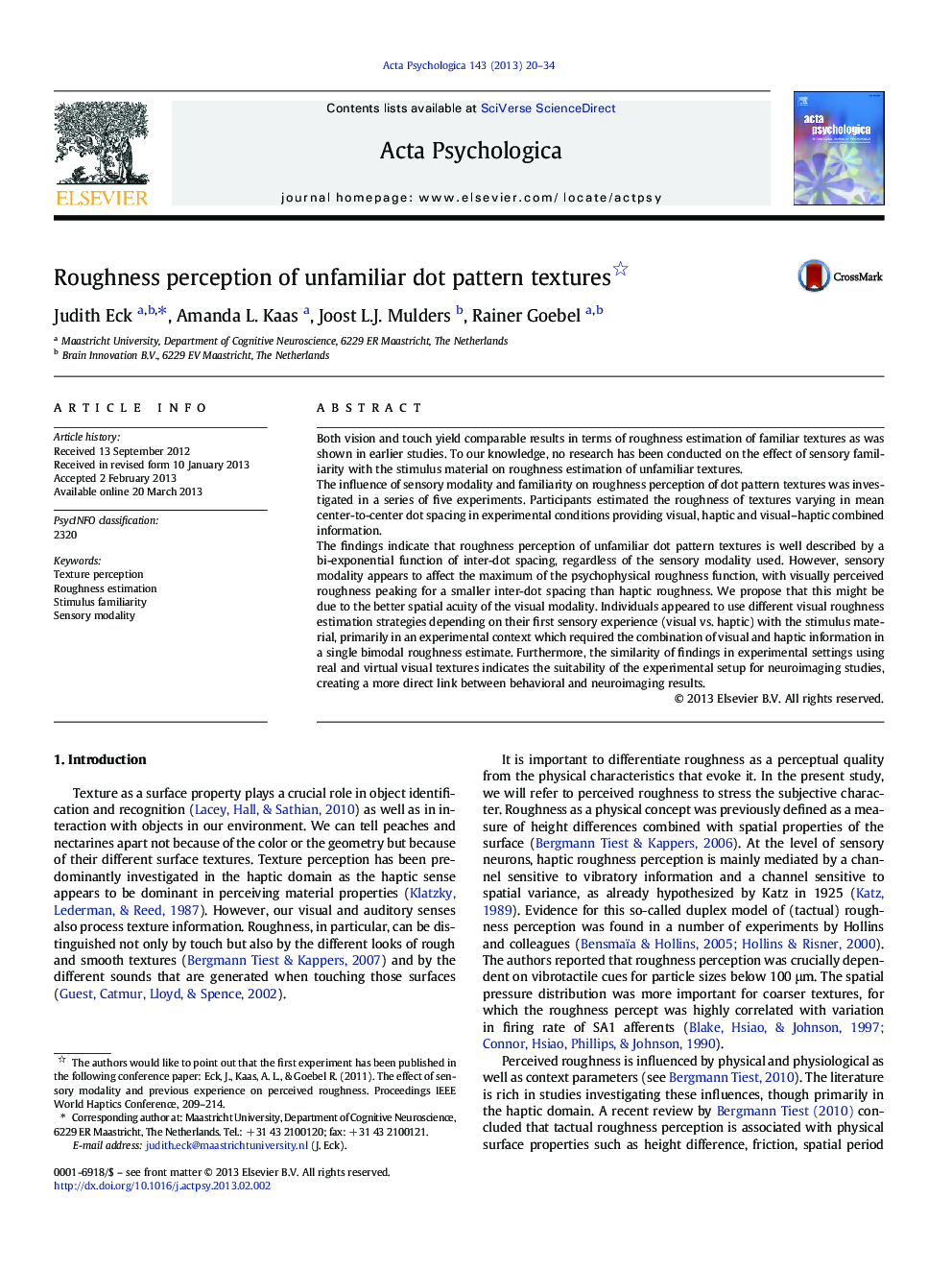| Article ID | Journal | Published Year | Pages | File Type |
|---|---|---|---|---|
| 919860 | Acta Psychologica | 2013 | 15 Pages |
Both vision and touch yield comparable results in terms of roughness estimation of familiar textures as was shown in earlier studies. To our knowledge, no research has been conducted on the effect of sensory familiarity with the stimulus material on roughness estimation of unfamiliar textures.The influence of sensory modality and familiarity on roughness perception of dot pattern textures was investigated in a series of five experiments. Participants estimated the roughness of textures varying in mean center-to-center dot spacing in experimental conditions providing visual, haptic and visual–haptic combined information.The findings indicate that roughness perception of unfamiliar dot pattern textures is well described by a bi-exponential function of inter-dot spacing, regardless of the sensory modality used. However, sensory modality appears to affect the maximum of the psychophysical roughness function, with visually perceived roughness peaking for a smaller inter-dot spacing than haptic roughness. We propose that this might be due to the better spatial acuity of the visual modality. Individuals appeared to use different visual roughness estimation strategies depending on their first sensory experience (visual vs. haptic) with the stimulus material, primarily in an experimental context which required the combination of visual and haptic information in a single bimodal roughness estimate. Furthermore, the similarity of findings in experimental settings using real and virtual visual textures indicates the suitability of the experimental setup for neuroimaging studies, creating a more direct link between behavioral and neuroimaging results.
► We model visual–haptic roughness perception of unfamiliar dot pattern textures. ► Visual–haptic roughness is characterized as a bi-exponential function of dot spacing. ► Unimodal vision shifts the roughness function peak towards smaller dot spacings. ► Visual roughness estimation likely affected by task demands and sensory experience ► Bimodal roughness seems to be more influenced by haptic than visual information.
